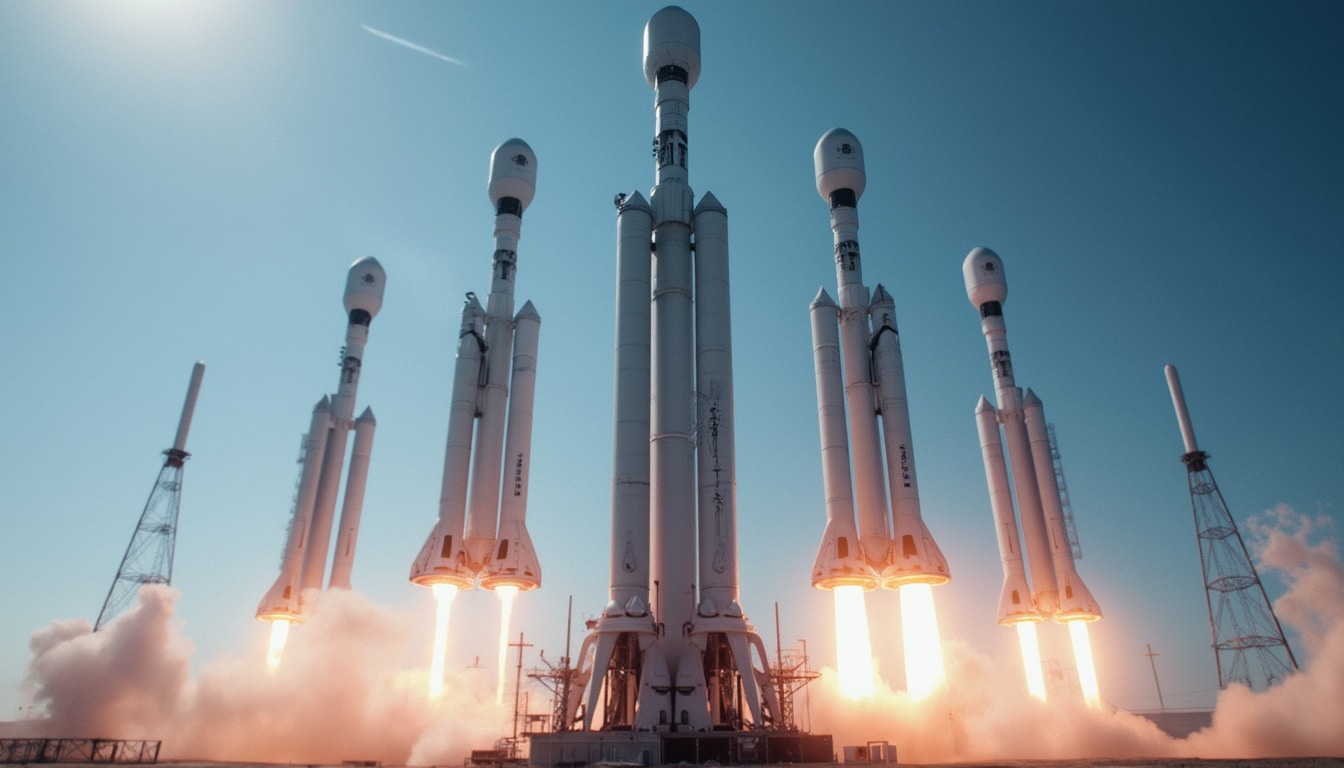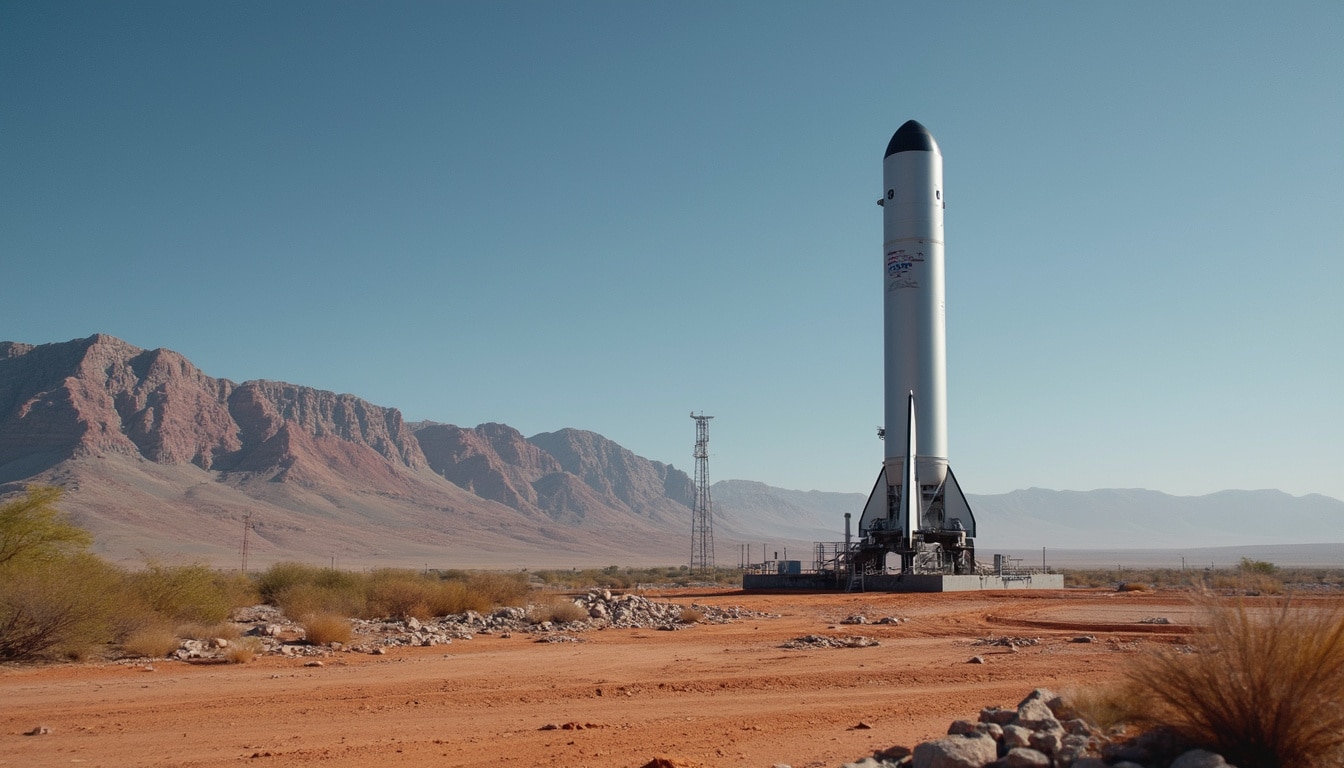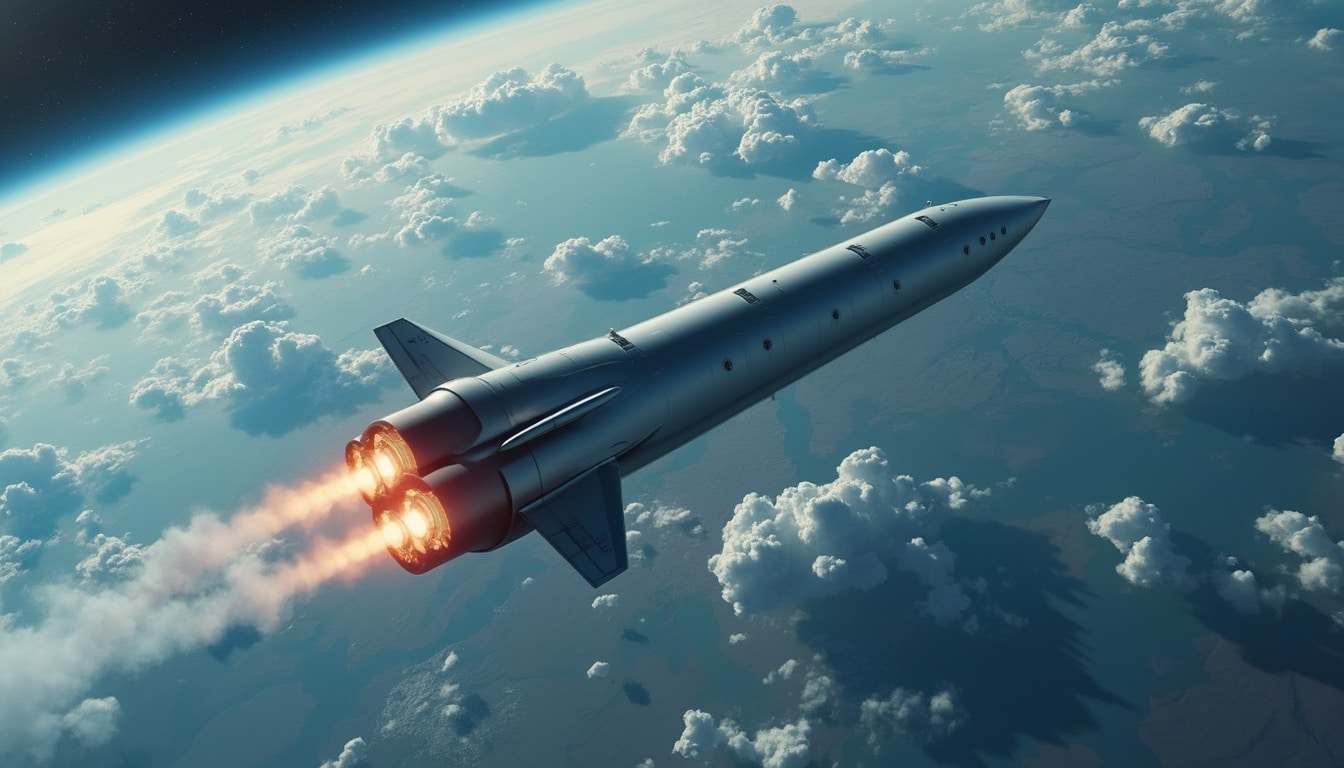As the calendar turned to 2025, SpaceX began the year at a relentless pace, marking impressive milestones with its Falcon rocket and Dragon spacecraft programs while simultaneously grappling with challenges surrounding its ambitious Starship project. The company set an audacious target of 180 launches for the year but adjusted that goal as it navigated through various delays and setbacks. Following significant progress in the Falcon and Dragon programs, including an impressive increase in launch cadence, SpaceX also faced critical failures with its Starship upper stage, revealing the challenges of innovation and technology testing in the field of aerospace. In this article, we will delve deeper into SpaceX’s journey in 2025, focusing on its Falcon launches, the status of its Dragon missions, the ongoing Starship endeavors, and the broader implications for the future of space exploration.
Falcon and Dragon Programs: Record-Breaking Achievements
SpaceX has long been recognized for revolutionizing the aerospace industry with its Falcon rockets. In early 2025, the company set out to achieve a record number of launches, leveraging its experience from prior years while being mindful of the pitfalls that could arise. The goal of 180 missions was ambitious, but the company made substantial strides toward this target in the first quarter. This resulted in a notable increase in overall launch cadence compared to previous years.

Launch Cadence and Performance Metrics
The launch cadence significantly improved during the first quarter of 2025, with SpaceX completing 36 missions compared to 31 in the same period last year. This reflects a remarkable 16% increase year-on-year. Although the initial target of 180 launches was adjusted down to 170 due to schedule delays, the upward trend indicates the company’s capability and efficiency in executing launches. SpaceX’s Falcon 9 demonstrated unprecedented reliability and performance, with every single launch being successful thus far.
Analyzing the launches further, the following table provides an overview of the launches conducted by different launcher origins:
| Launcher origin | Launches | Successes | Failures | Partial Failures |
|---|---|---|---|---|
| US (SpaceX) | 36 | 36 | 0 | 0 |
| Others | 6 | 6 | 0 | 0 |
| China | 17 | 16 | 1 | 0 |
| Russia | 4 | 4 | 0 | 0 |
| Europe | 2 | 1 | 1 | 0 |
| Japan | 1 | 1 | 0 | 0 |
| India | 1 | 1 | 0 | 0 |
| TOTAL | 67 | 65 | 2 | 0 |
Breaking down the performance metrics, it becomes evident that SpaceX not only dominated the launch scene but also experienced an unwavering success rate unlike any other competitor. While the challenges faced with Falcon 9 were minimal, they served as a reminder of the inherent risks tied to space launches.
Noteworthy Missions and Achievements
The impressive track record of Falcon 9’s achievements continued with a range of missions supporting both commercial and governmental entities. Notably, January 2025 saw the successful launch of two lunar landers, affirming SpaceX’s forefront position in supporting interplanetary exploration initiatives. Furthermore, the Company executed several missions that advanced its Starlink program, further expanding internet access globally.
As Starlink operations continued to gain momentum, the program saw significant growth in user adoption. In the first quarter alone, the user base surpassed five million subscribers, driven by the recent rollout of Direct-to-Cell services. This development showcased SpaceX’s adaptability in providing innovative connectivity solutions.
The Falcon rockets’ launch cycle was punctuated with major client missions, including the launch of the Duo for NASA missions: SPHEREx and PUNCH. These successful missions not only served to position SpaceX as a reliable partner for space endeavors but also allowed significant scientific data collection that could pave the way for future discoveries.
Ongoing Starship Challenges: Trials in Innovation
While the Falcon program continued to soar, SpaceX encountered notable challenges with its Starship project. Designed as the largest rocket ever constructed, Starship’s innovation was met with high expectations which for this early year proved to be a double-edged sword. The second stage, known as Starship V2, experienced two consecutive failures, signaling the importance of rigorous testing and validation in the development process.

Technical Setbacks and Recovery Efforts
The back-to-back failures of the Starship upper stage sparked inquiries into the vehicle’s design and operational capabilities. The first incident involved Starship’s seventh flight test, where the vehicle failed to reach its intended orbit due to issues with the fuel distribution system, leading to the loss of multiple engines during flight. This setback underscored the complexity and risks involved in developing such an advanced rocket.
SpaceX responded swiftly to these challenges, adopting lessons learned for future enhancements of the spacecraft. The company’s Vice President of Build and Flight Reliability disclosed that modifications would be applied to the thrust profile of the engines, thereby reducing vibration and improving overall performance. These actions reflect SpaceX’s commitment to maintaining a forward trajectory in achieving the missions established for Starship.
The Broader Landscape: SpaceX, Blue Origin, and Competitors
SpaceX shares the stage with several noteworthy competitors, including Blue Origin, Boeing, Lockheed Martin, and Arianespace, all vying for leadership in the ever-evolving space industry. Each company operates under a unique approach to engineering and business goals, shaping how they position themselves in the marketplace. Blue Origin, helmed by Jeff Bezos, aims to advance suborbital and orbital tourism, while Boeing and Lockheed Martin lead the collaborative efforts on programs like the Artemis missions in partnership with NASA.
Rocket Lab, a rising player in the commercial launch sector, continues to expand its capabilities while capitalizing on market demand for smaller payload launches. Arianespace, too, has made substantial inroads, promoting European launch capabilities and expanding service offerings which cater to international clients. With these competing interests in play, the landscape is both dynamic and competitive, driving innovation at a breathtaking pace.
Starship’s Future and Potential Transformations
Despite the ongoing trials, the future of Starship holds immense potential for altering the trajectory of space exploration and travel. As SpaceX refines its designs and works toward achieving successful flight tests, the implications extend beyond mere operational capabilities; they also encompass redefining our understanding of long-distance human travel to Mars and potentially beyond.

First Crewed Missions and Interplanetary Goals
As plans coalesce around crewed missions to Mars and lunar travel, SpaceX envisions Starship as a multifaceted vehicle, capable of bridging gaps between different stages of human exploration. The upcoming Fram2 mission stands to exemplify this purpose as it is set to mark a historic moment in conducting the first crewed polar orbit mission. This milestone emphasizes SpaceX’s focus on versatile solutions for human spaceflight that can adapt to a variety of missions.
NASA has recognized the promise that accompanies SpaceX’s advancements, awarding contracts that facilitate the integration of SpaceX rockets with future lunar landings and planetary exploration plans. These collaborations highlight the increasing interdependence between government space agencies and commercial entities, reflecting a changing paradigm in the field.
Fostering Global Collaboration and Innovation
As the entire space sector moves forward in an expansive direction, collaboration will continue to play a pivotal role. Organizations like NASA and SpaceX can work in synergy to foster shared goals that aim not only to explore new worlds but also to create sustainable approaches to living and working in space. This commitment can be seen in their partnerships involving payload launches for scientific missions and exploration-related tests.
Other companies like Virgin Galactic explore the potential for space tourism while long-term players like Boeing and Lockheed Martin refine the technologies that provide human safety and success in these ventures. Each contribution uniquely shapes the future of space exploration, allowing humanity to further its reach across the cosmos.
Looking Ahead: The SpaceX Vision for 2025 and Beyond
As 2025 unfolds, SpaceX stands at a critical juncture, ready to navigate through the challenges that accompany rapid technological advancement while simultaneously achieving its launch goals. The Falcon program is expected to persist with its growth trajectory, enhancing capabilities and broadening its reach into the global market. Additionally, Starship’s ongoing developments signify that significant milestones in interplanetary exploration are within reach.
Continued Expansion of Starlink and Global Connectivity
The future ahead for SpaceX also includes the sustained growth of its Starlink program. With increasing user adoption and new partnerships with major telecommunications providers, the push for enhanced global connectivity is underway. The launch of Starlink missions will likely surpass the 100 mark this year, improving internet access for even the most remote locations worldwide.
Building collaboration with mobile carriers from around the globe enhances Starlink’s service offerings, setting a benchmark for instant connectivity. Key international players have already initiated their beta programs in several countries, showcasing the potential for SpaceX to lead the way in revolutionizing the telecom sector.
In summary, SpaceX’s trajectory in 2025 continues to be marked by innovation, achievements, and challenges alike. While the road ahead may be rife with complexities, the company’s commitment to exploration and technology remains undeterred. Rightly so, the eyes of the world will be focused on SpaceX, awaiting to witness the next chapter in an extraordinary journey toward redefining humanity’s place in the universe.




Leave a Reply